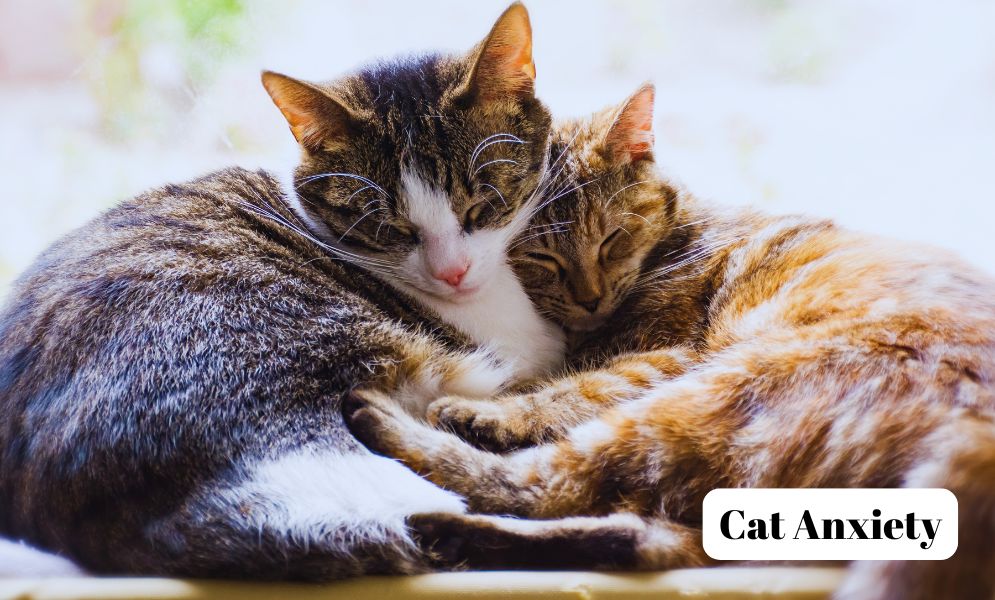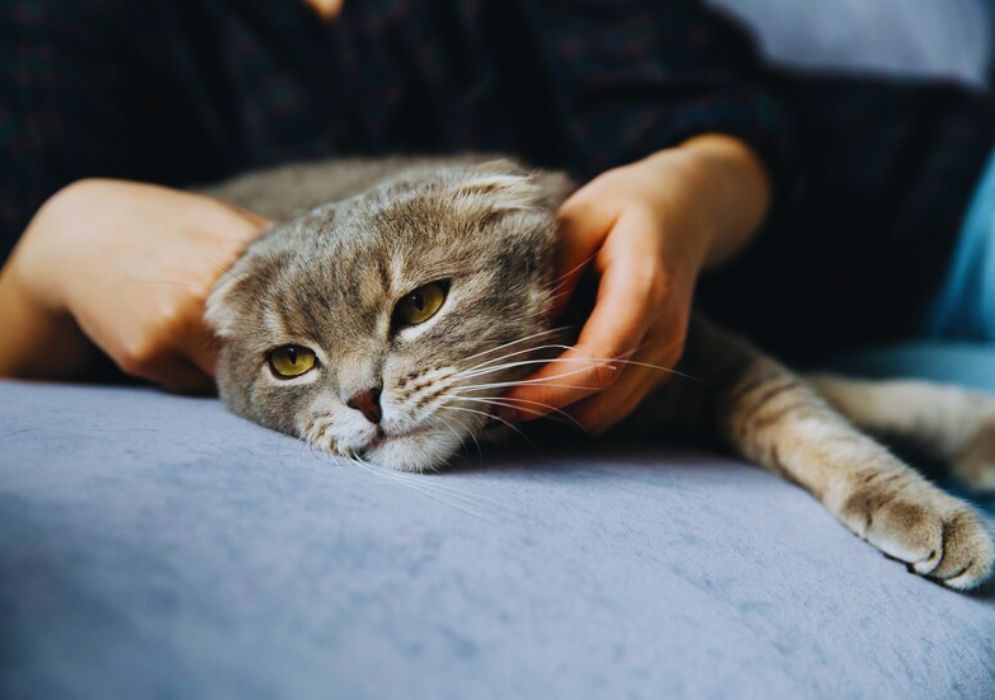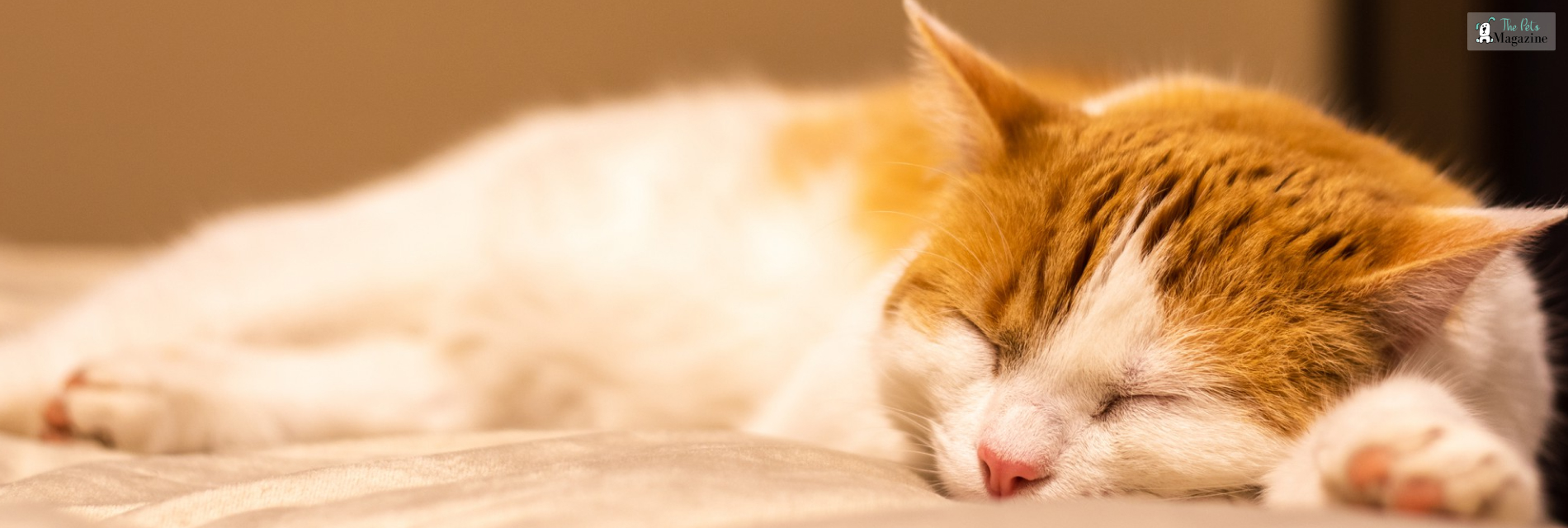Psychological Well-Being of Cats: How to Avoid Stress and Anxiety


As a veterinarian working in Dubai, I often receive questions from cat parents regarding managing their cat anxiety and stress. A cat’s psychological health is just as important as its physical health. Stress can not only worsen a cat’s overall condition but also lead to various health problems. In this article, I will share some practical recommendations on how to reduce stress levels in cats and create a comfortable environment for them. So, if you want to know how to keep your kitty calm and happy, continue reading.
Signs of Stress and Anxiety in Cats

The first thing to look out for is the signs of stress in your cat. They may not always be obvious, but if you know what to watch for, you can take action in time. Common signs of cat anxiety and stress include:
- Aggressive behavior (hissing, biting, scratching)
- Hiding or avoiding people and other animals
- Changes in appetite — the cat may start eating more or less
- Litter box issues, such as urinating outside the box
- Excessive grooming or fur pulling
- Vocalization — the cat may start meowing frequently or making distressed sounds
Recognizing these signs can help you understand when your cat is experiencing stress and needs your support.
Common Causes and Tips for Reducing Stress in Cats: A Quick Overview

Go through the table given below to learn about the common causes of cat anxiety and stress and what you can do to make your cat feel better.
| Cause of Stress | What To Do (Tips for Cat Parents) |
| Changes in the Environment, like moving or renovation | Gradually introduce any new changes, create safe spaces, and make sure your cat has access to familiar items (toys, bed and blankets) |
| Introduction of a New Pet or Person | Introduce your cat to new pets or people and provide hiding spots for them to retreat to |
| Changes in Daily Routine | Gradually Introduce any new changes to your cat’s routine and offer treats for positive reinforcement |
| Loud noises such as thunderstorms and firecrackers | Use white noise machines, and calming products like pheromone diffusers and provide safe and quiet hiding spaces |
| Lack of stimulation | Regularly engage them in playtime; create obstacle courses; provide scratching posts, interactive toys; rotate toys and puzzle feeders. |
| Health Issues | Take them for regular vet check-ups, monitor for signs of illness, and provide a comfortable resting area. |
| Overcrowding | Make sure that each cat has its own space, litter box, and resources to avoid competition. |
| Traveling | Use a comfortable carrier, bring familiar items, and keep trips as short as possible. |
| Boredom | Provide plenty of Interactive toys, scratching posts, catnip plants, and vertical spaces for climbing |
Causes of Stress in Cats
It’s also important to understand what triggers stress and anxiety in cats so that you can prevent or minimize it. The main causes include:
- Changes in the home environment: Moves, renovations, changes in daily routines, or the arrival of new people and animals can make a cat feel insecure and anxious.
- Lack of hiding spots and resting areas: Cats are territorial animals that need their own space to feel safe.
- Limited interaction or excessive social demands: Too much attention or, conversely, a lack of interaction can cause discomfort for a cat.
- Lack of physical activity and stimulation: Boredom and lack of stimulation can lead to stress and even depression in cats.
How to Create a Safe and Comfortable Environment for Your Cat?
To reduce cat anxiety and stress, it is essential to create a safe and comfortable environment. Here are some recommendations:
- Hiding spots and resting areas: Make sure there are quiet corners in your home where your cat can hide and feel secure. These can be special cat houses, spots under furniture, or high shelves.
- Play and stimulation: Interactive toys, scratching posts, and climbing trees help keep cats active and mentally stimulated. Regular playtime with your cat helps reduce stress and strengthens your bond with your pet.
- Follow a fixed Routine: Cats love predictability. Try to feed, play with, and spend time with your cat at the same time each day. This helps them feel more secure and calm.
The Impact of Changes on Cats and How to Manage Them

Any changes in the home can be stressful for cats. Moving, renovations, or even the arrival of a new family member can cause anxiety. To minimize stress from changes, you can consider doing the following:
- Gradually introduce new elements into the environment. For example, if you bring home a new pet, give your cat time to get used to the new scent before face-to-face meetings.
- Provide your cat with hiding spots all around your home where it can retreat and avoid stress during times of change.
If the suggestions that I have mentioned above do not work, then consider using calming products like pheromones and thundershirts.
Using Pheromone Diffusers and Sprays
There are various products that can help reduce stress in cats, such as pheromone diffusers. These can help create a calming atmosphere, but it’s important to remember to consult your veterinarian before using any calming aids. Each case is unique, and what works for one cat may not be suitable for another.
The Role of the Veterinarian in Reducing Stress in Cats
Regular visits to the veterinarian are essential not only for a cat’s physical health but also for its psychological well-being. A veterinarian can assess your cat’s overall condition and provide care and nutrition recommendations that can help reduce stress levels.
As “Vet Dubai” advises, “We recommend that cat owners do not delay visits to a specialist at the first signs of stress or behavioral changes to promptly diagnose any potential problems.”
Educating Owners: How to Interact with Your Cat to Reduce Stress
Owners also play a key role in reducing stress in cats. It is important to know how to approach your cat properly, especially if it is already stressed. Avoid sudden movements or loud noises that may scare the cat. Give it time and space to adjust to a new environment or situation.
Here’s What You Need To Remember
A cat’s psychological well-being deserves just as much attention as its physical health. So, focusing on creating a safe and comfortable environment, maintaining a fixed routine, understanding the causes of stress, and interacting and playing with your cat regularly will help keep them mentally healthy.
Remember, every pet is unique, and what works for other cats may not work for yours. So, the approach to reducing stress should be individualized. Regularly consult your veterinarian and observe your cat for behavioral changes so that you can respond promptly.








Leave A Comment